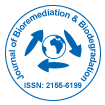Confetti as an Eco-Friendly Send-Off for Weddings: DIY Biodegradable Options
Received: 03-Mar-2024 / Manuscript No. jbrbd-24-132998 / Editor assigned: 05-Mar-2024 / PreQC No. jbrbd-24-132998 / Reviewed: 19-Mar-2024 / QC No. jbrbd-24-132998 / Revised: 23-Mar-2024 / Manuscript No. jbrbd-24-132998 / Published Date: 30-Mar-2024
Abstract
The tradition of showering the bride and groom with confetti as they embark on their marital journey is a cherished one. However, traditional confetti often contains harmful materials that pose risks to the environment, wildlife, and even humans. This research article explores the benefits of using biodegradable confetti as an eco-friendly alternative. We delve into its safety, water solubility, and environmental impact. Moreover, we provide practical guidance on how to make biodegradable confetti at home without harming the environment.
Keywords
Biodegradable confetti; Eco-friendly; Traditional confetti; Environmental impact; Wildlife harm; Water pollution
Introduction
The wedding send-off is a moment filled with joy and celebration. However, the environmental impact of traditional confetti, often made from plastic or metallic materials, has raised concerns [1]. Biodegradable confetti offers a sustainable and safe alternative that aligns with eco-conscious lifestyles. This article aims to shed light on the advantages of using biodegradable confetti and how one can easily make it at home [2].
Environmental impact of traditional confetti: Traditional confetti, particularly those made from plastics or metallic foils, can take years to decompose. When released into the environment, it contributes to plastic pollution, harms wildlife, and can contaminate water sources [3]. Birds and animals often mistake confetti for food, leading to ingestion and potential harm.
Harm to wildlife: Birds and small animals can ingest nonbiodegradable confetti, leading to digestive issues, blockages, and even death. The bright colours of some confetti can attract animals, making them more susceptible to consuming it [4].
Water pollution: Non-biodegradable confetti can find its way into waterways, where it persists and contributes to water pollution. This pollution can harm aquatic life and affect water quality, posing risks to both wildlife and humans.
Benefits of biodegradable confetti
Safety: Biodegradable confetti is made from natural materials that are safe for the environment and living beings. It poses no risk of harm to wildlife or water sources, making it an ideal choice for eco-conscious weddings.
Water solubility: One of the key advantages of biodegradable confetti is its water solubility. Unlike traditional confetti that can linger in waterways, biodegradable options dissolve over time, reducing the risk of water pollution.
Environmental friendliness: Biodegradable confetti breaks down naturally, reducing the environmental impact compared to nonbiodegradable alternatives. It can be composted or left to decompose, enriching the soil rather than polluting it [5-9].
DIY Biodegradable Confetti: A Step-by-Step Guide
1. Materials Needed
2. Colored paper (newspapers, magazines, or tissue paper)
3. Scissors
4. Hole puncher (optional)
5. Water-based glue or starch
Steps to make biodegradable confetti
Gather materials: Collect colored paper from newspapers, magazines, or tissue paper.
Cut paper: Use scissors to cut the paper into small pieces or shapes. You can also use a whole puncher for uniform shapes.
Dry naturally: Allow the cut pieces to dry completely.
Optional: Apply a thin layer of water-based glue or starch to enhance durability (ensure its eco-friendly).
Store: Store the homemade biodegradable confetti in a dry place until ready for use.
Conclusion
Biodegradable confetti offers a sustainable and eco-friendly alternative to traditional confetti. Its safety, water solubility, and minimal environmental impact make it an ideal choice for weddings and other celebrations. By opting for DIY biodegradable confetti made from recycled materials, we can contribute to a greener planet without compromising on tradition or festivity. Embracing this eco-friendly alternative not only adds a special touch to the wedding send-off but also demonstrates a commitment to environmental stewardship.
Acknowledgment
None
Conflict of Interest
None
References
- Feng R, Wen J (2015) Overview of the roles of Sox2 in stem cell and development. Biol Chem 396: 883-891.
- Juuri E, Jussila M, Seidel K, Holmes S, Wu P, et al. (2013) Sox2 marks epithelial competence to generate teeth in mammals and reptiles. Development 140: 1424-1432.
- Johnston AP, Naska S, Jones K, Jinno H, Kaplan DR, et al. (2013) Sox2-mediated regulation of adult neural crest precursors and skin repair. Stem Cell Reports 1: 38-45.
- Kerr JF, Wyllie AH, Currie AR (1972) Apoptosis: a basic biological phenomenon with wide-ranging implications in tissue kinetics. Br J Cancer 26: 239-257.
- Yahiro AT, Lee SM, Kimble DO (1964) Bio electrochemistry. I. Enzyme Utilizing Bio- Fuel Cell Studies (in eng) Biochim Biophys Acta 88: 375-383.
- Mekonnen E, Kebede A, Tafesse T, Tafesse M (2020) Application of Microbial Bio enzymes in Soil Stabilization," (in eng) Int J Microbiol 1725482.
- Kumar S, Diksha S, Sindhu S, Kumar R (2022) Bio fertilizers: An eco-friendly technology for nutrient recycling and environmental sustainability. Curr Res Microbe Sci 3: 10009.
- Lebental B (2011) Aligned carbon nanotube based ultrasonic micro transducers for durability monitoring in civil engineering (in eng) Nanotechnology 22: 395501.
- Ding M, Zhang Y, Li J, Pu K (2022) Bio enzyme-based Nano medicines for enhanced cancer therapy," (in eng) Nano Converg 9: 7.
Google Scholar, Crossref, Indexed at
Google Scholar, Crossref, Indexed at
Google Scholar, Crossref, Indexed at
Google Scholar, Crossref, Indexed at
Indexed at, Google Scholar, Cross Ref
Indexed at, Google Scholar, Cross Ref
Indexed at, Google Scholar, Cross Ref
Citation: Smith JA (2024) Confetti as an Eco-Friendly Send-Off for Weddings: DIYBiodegradable Options. J Bioremediat Biodegrad, 15: 610.
Copyright: © 2024 Smith JA. This is an open-access article distributed under theterms of the Creative Commons Attribution License, which permits unrestricteduse, distribution, and reproduction in any medium, provided the original author andsource are credited.
Share This Article
Recommended Journals
Open Access Journals
Article Usage
- Total views: 541
- [From(publication date): 0-2024 - Apr 03, 2025]
- Breakdown by view type
- HTML page views: 359
- PDF downloads: 182
